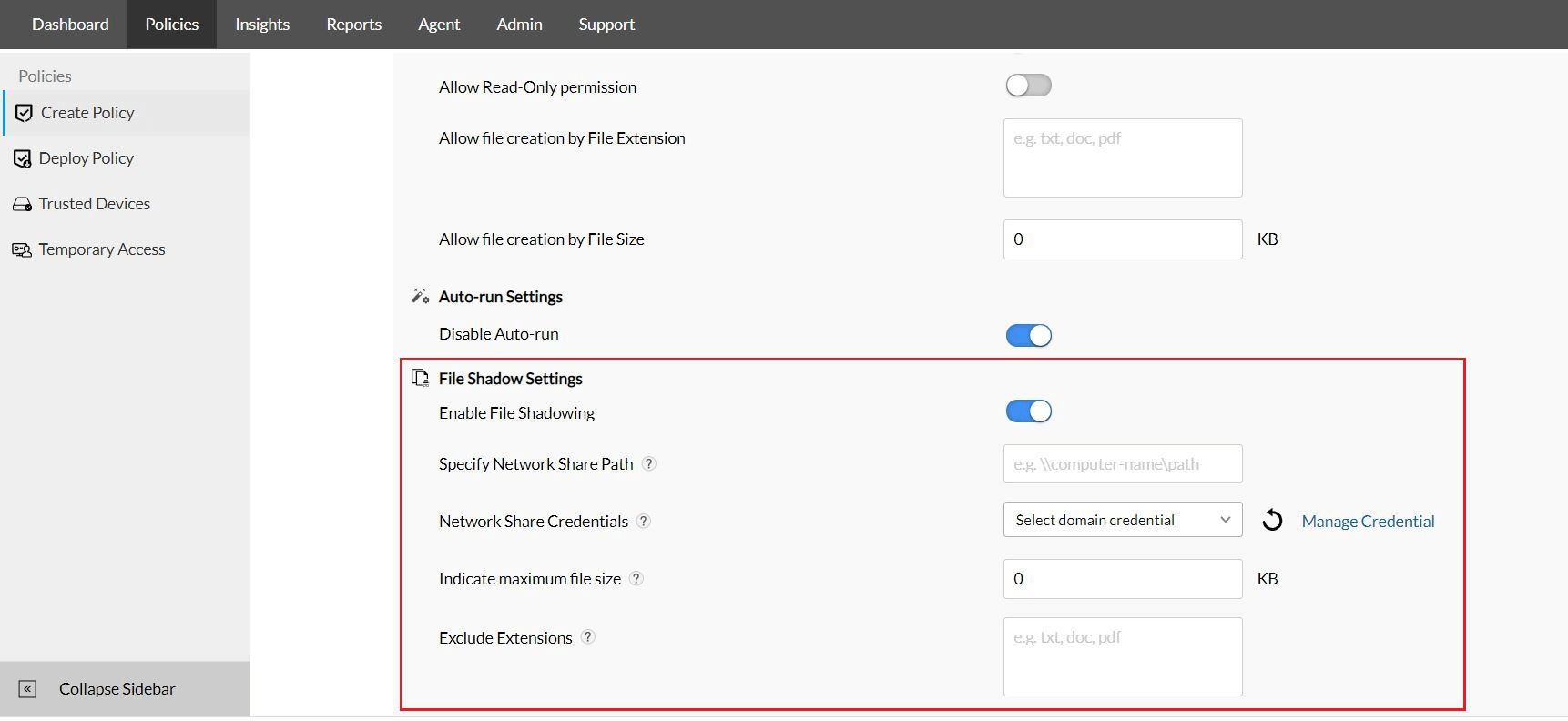Data mirroring is the process of replicating the contents of files that have been transferred into or modified within USB devices. Once mirror copies are made, they can be maintained in a password-protected network share. This share folder is best kept in a remote location to save space on local machines. This way, it can be securely accessed and analyzed by only the administrator or trusted users.
Data mirroring software is a tool that you can use to configure policies to ensure that data mirroring happens whenever any file action is carried out on a USB, or just when specific file actions are performed. Details regarding the file operation such as file name, users, devices, endpoints involved as well as the time of action can also be recorded.
Although data mirroring requires considerable bandwidth and disk space, when configured carefully, it is an effective way of safeguarding corporate data that has been transferred out of the network using removable devices.
The following are the ways in which data mirroring differs from backup:
Data mirroring is often confused with data replication- a process intrinsic to database management systems. While there can be multiple uses for data replication in an enterprise, such as making data fluid and readily accessible in larger networks, the term database mirroring is specially attributed towards disaster recovery and prevention against hard-deletion of files.
If and when circumstances do arise where information is lost due to data theft or some other human or hardware-related error after being transferred, the data mirroring software ensures that the share folder can still be utilized. It can be cross-referenced to identify the exact contents of the files that have been compromised. If the information includes crucial details such as passwords, financial records, or even protected personal information (PPI), remediation efforts can be carried out immediately.
It is crucial that data required for critical tasks or data accessed by many employees remains in tact. It is equally important to have the information always available to authorized employees so that they can access it whenever necessary.
However, if data loss occurs due to neglect or theft during file actions involving USB devices, having a data mirroring software in place provides the organization with a cost-effective way to recover. After extracting information from a system, whatever files become corrupted or go missing while being transported in the USB device can be swiftly retrieved from the network share and restored to a location where relevant employees can regain access to them.
If a specific file is frequently needed but happens to be indexed in a top security repository containing numerous other classified information, the administrator would have to grant users high-level access each time they would need that particular file. Not only does it mandate tremendous effort on behalf of the administrator to assign permissions and revoke them accordingly once the file has been accessed, it also poses a risk for the organization as it renders the vault and its other files momentarily vulnerable. A simple resolution for this obstacle is to assign the users who require the file on a consistent basis, access to the network file archive remote share instead.

To prevent file based attacks due to excessive access privileges, download a 30 day, free trial of Device Control Plus to get acclimated with this data mirroring software